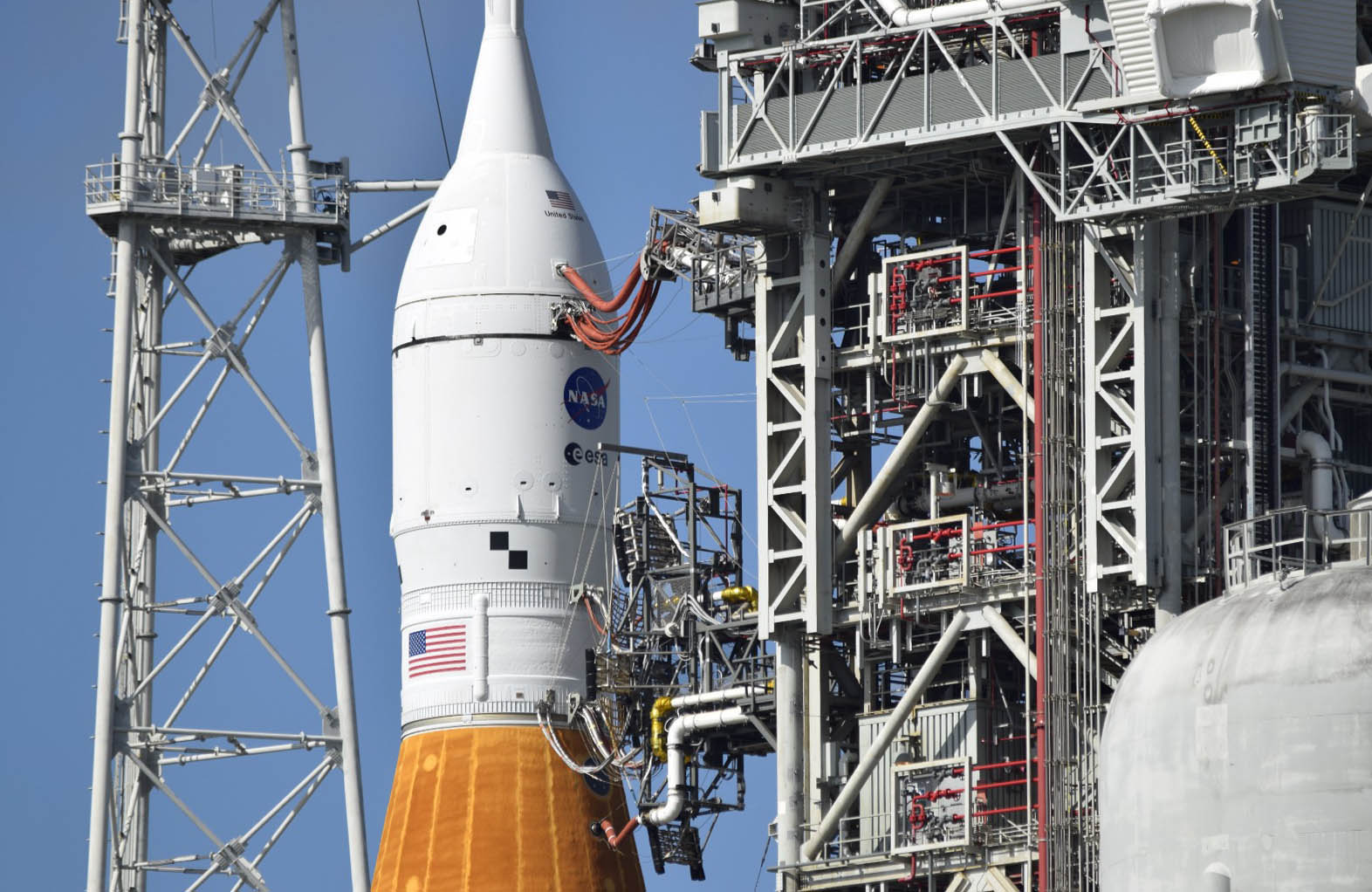The long-awaited and much anticipated launch of NASA's Artemis1 mission was scrubbed today after engineers discussed a pesky bleed problem in one of the four main engines which they couldn’t resolve during the final hours of countdown. Thousands of people who had descended on areas around Kennedy Space Center to witness the histroic launch were left disappointed.
A new launch attempt date is available on 2 September but this will only be decided once all data has been reviewed. If the engine problem is deemed more serious it is possible the whole SLS stack will be rolled back to the VAB so the engine can be replaced completely.
SLS uses four liquid-fuelled RS-25 engines, which flew on the Space Shuttle before being refurbished and upgraded, as well as a pair of solid rocket boosters. However, the way they are bled (brought up to operating temperature) pre-launch is different for SLS compared to the Shuttle.
The RS-25 powered the Space Shuttle for over three decades and completed 135 missions. It is one of the most tested large rocket engines in history, with more than 3,000 starts and more than one million seconds of total ground test and flight firing time.
During the Space Shuttle programme, the RS-25 underwent several design updates to improve service life, durability, reliability, safety and performance. SLS is designed to take advantage of that technology investment and experience.
On Shuttle missions, the RS-25s routinely operated in flight at 104.5 percent of their original 100 percent rated thrust level but were tested up to 111 percent thrust. But to meet the demands of an SLS flight, more power and performance is required.
Between March 2017 and April 2019, an engine test series at NASA’s Stennis centre certified the engines to operate at normal SLS flight levels of 109 percent. During the tests, new and more capable engine controllers were tested for every engine. In the process, the engine was tested at thrust levels up to 113 percent to allow for operating safety margins.
Two SLS flight sets of four engines each have been adapted for their new Artemis missions and processed for flight, and a third flight set is undergoing processing. In addition to new controllers, which have also been tested, each engine received additional insulation to protect it from the hotter launch environment of being closer to the twin solid rocket boosters.
Another potential problem, an issue with a crack found in the inter-tank section of the SLS core stage, was resolved earlier in the countdown. The crack, and associated frost accumulation, is in the foam insulation, and not in the core stage tank structure.
The Artemis 1 mission powered by NASA’s most powerful rocket yet, comes five decades after the final flight of NASA’s legendary Saturn 5 rocket, for what is a long-overdue test flight, sending an unpiloted Orion crew capsule on a 42-day voyage around the Moon.
Engine problem leads to scrub of SLS Artemis 1 mission











